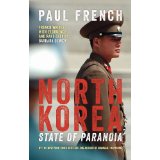Posted: July 6th, 2014 | No Comments »
A new book from Nancy Bernkopf Tucker that looks at the larger forces that shaped Eisenhower Administration policy toward China in what was an especially critical moment for US relations with the People’s Republic of China (PRC) and Taiwan.
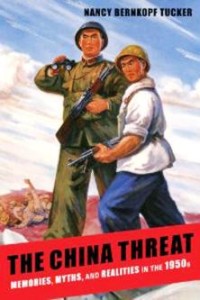
Nancy Bernkopf Tucker confronts the coldest period of the cold war—the moment in which personality, American political culture, public opinion, and high politics came together to define the Eisenhower Administration’s policy toward China. A sophisticated, multidimensional account based on prodigious, cutting edge research, this volume convincingly portrays Eisenhower’s private belief that close relations between the United States and the People’s Republic of China were inevitable and that careful consideration of the PRC should constitute a critical part of American diplomacy.
Tucker controversially argues that the Eisenhower Administration’s hostile rhetoric and tough actions toward China obscure the president’s actual views. Behind the scenes, Eisenhower and his Secretary of State, John Foster Dulles, pursued a more nuanced approach, one better suited to China’s specific challenges and the stabilization of the global community. Tucker deftly explores the contradictions between Eisenhower and his advisors’ public and private positions. Her most powerful chapter centers on trade and Eisenhower’s recognition that rigid prohibitions would undermine the global postwar economic recovery and push China into a closer relationship with the Soviet Union. Ultimately, Tucker finds Eisenhower’s strategic thinking on Europe and his fear of toxic, anticommunist domestic politics constrained his leadership, making a fundamental shift in U.S. policy toward China difficult if not impossible. Consequently, the president was unable to engage congress and the public effectively on China, ultimately failing to realize his own high standards as a leader.
Posted: July 5th, 2014 | 1 Comment »
I’ve blogged about Arthur Ransome’s time in China in the 1920s before (here). For those who haven’t read his one China book, Missee Lee, where the Swallows and Amazons find themselves in the South China Seas it’s now out in e-book form. The Swallows and Amazons finally meet a real pirate – the tiny, pistol-carrying Missee Lee, who has rescued them after their shipwreck off the coast of China. The only trouble is she wants to keep them… for ever.
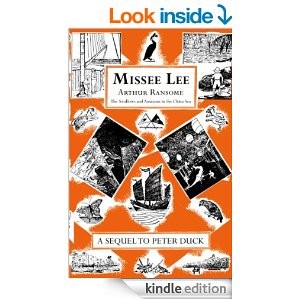
Posted: July 4th, 2014 | No Comments »
Edward Wilson is a favourite espionage writer of mine who deserves a lot more readers. His latest novel, The Whitehall Mandarin, is effectively the fourth in what I think was planned as a trilogy that comprised The Envoy, The Darkling Spy and The Midnight Swimmer. I recently reviewed The Whitehall Mandarin and Wilson’s work for the Los Angeles Review of Books (The Exile and the Spy here), but there’s a lot more in the novel that might make it especially appealing to those with an interest in China history (presumably China Rhyming readers). So this is a sort of additional few comments, like a DVD extra – you didn’t really ask for it, you didn’t really want it and you most probably don’t need it, but anyway….
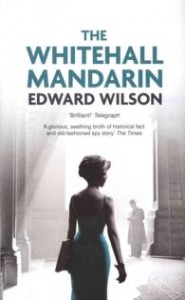
One of the issues at the heart of Wilson’s closely observed novel is the idea that, just as Soviet Intelligence penetrated British Intelligence from the 1930s, so the Chinese did from the 1960s and that this is one explanation of how Maoist China, amidst the turmoil of the Sino-Soviet Split and the start of the Cultural Revolution got the A-bomb. Just as an earlier generation of men and women who went on to serve in British Intelligence became enamoured of the USSR in the 1930s, perhaps there was another group, in the 1950s, who became equally enamoured of the PRC and offered western secrets to them. Of course we know that Britain and America had its fair share of student Maoists but it’s not generally assumed that Beijing was in a position to recruit and effectively use them in the way the Soviet Union and KGB had done previously. The Whitehall Mandarin posits that maybe we’re wrong to think that. It is the case that China’s nuclear programme appears to have moved at lightening speed:
FISSION TO FUSION
France = 105 months
United States = 86 months
Soviet Union = 75 months
United Kingdom = 66 months
People’s Republic of China = 32 months
I’m not going to give away any of the plot of Wilson’s novel – you really should read it if even slightly interested in this period and question but it has some interesting scenes in the Zhongnanhai of the 1960s and some observations that are extremely pertinent today given current tensions and events. At one point, among the North Vietnamese, fighting America with Chinese made weapons there is a discussion of whether General Giap and the North Vietnamese will ultimately prove pro-Moscow or pro-Beijing – they are of course playing each of against the other during the Sino-Soviet Split to get as much materiel as possible. But older tensions simmer: “She’s a fanatical Maoist. And she doesn’t realise that China is Vietnam’s historical enemy. We admire their culture, but fear their power.” Given the current tensions between Beijing and Hanoi and the stalemate in their ongoing talks this week this rings as true of 1964 as it does of 2014. One Vietnamese leader tells Wilson’s spy hero – “China doesn’t want this war to end. It’s in China’s national interest to keep Vietnam weak and dependent…” Plenty in Hanoi would still nod sagely at that analysis.
Of course China supported the North during the war but relations swiftly soured after 1975 and a border war followed in 1979 but now those South China Seas issues are back again….
Posted: July 3rd, 2014 | 2 Comments »
Back in 2011 I blogged about the Blue Funnel Line. Chris Pownall read the post and sent me an amazing story of his trip to Shanghai and China in 1967 (Cultural Revolution times) and has agreed I can share here as I think many regular readers may find his impressions and memories of 1960s Shanghai of interest….
A Trip to Shanghai in 1967
I first visited Shanghai in July/August of 1967, whilst serving as a junior engineering officer aboard the S.S. Talthybius, belonging to the famous, Blue Funnel Line.
Talthybius was a Victory Ship built in 1944 by the Permenente Metals Corp (Shipyard No 1) located in Richmond, California. She had a gross weight of 7,671 tons, a length of 455 feet, and a beam of 62 feet. Her service speed was 15 knots, and she was powered by a three stage Westinghouse steam turbine. She was a type VC-S-AP2 Victory Ship, and she was launched as the S.S Salina Victory for the United States Maritime Commission in 1944. After WW2, Salina Victory was acquired by the Dutch Blue Funnel line and renamed S.S. Polydorus. In 1966 she was transferred to the British Blue Funnel line and again renamed, this time to S.S. Talthybius. All Blue Funnel ships were named after characters from Greek mythology.

We sailed from Birkenhead in June 1967, and because the Suez Canal was closed following the six day war between Israel and Egypt, we had to take a much longer route via South Africa and the ‘Cape of Good Hope’. We made numerous stops in the Far East before setting course for Shanghai.
As we entered the estuary of the Yangtze River, we were boarded by a number of ‘Red Guards’ who were to escort our ship for the duration of our visit. Prior to entering Chinese waters, our Captain had briefed us on how we should conduct ourselves and to remember at all times that we were representing our country; therefore, if we were to encounter any hostilities, we should always conduct ourselves like officers and gentlemen. We were instructed to leave everything inside our cabins unlocked, including our porthole that would normally be tightly secured, whilst we were in any port. All personal possessions had to be left inside a draw and we were assured that nothing would be stolen, whilst we were in China. Our personal radios and cameras were collected by the Chief Steward who locked them all away until our visit was completed. We would not be allowed to communicate with our families or friends, and we were asked to inform our next of kin that we would be incommunicado for at least five weeks.
From the Yangtze we steamed up the Huangpu River, where we were to lay off at a mooring buoy outside the port of Shanghai. We spent a couple of weeks before receiving a signal to go alongside to discharge our cargo of tin plate, which we had shipped from a steel mill in South Wales. When the ship berthed we could hear the sound of a loud voice coming from speakers attached to telegraph poles on the quay side. In very clear English the voice was making propaganda statements about the British such as “Down with British imperialismâ€. A sentry box was positioned at the bottom of the ships gangway, where a soldier stood to check the credentials of everyone boarding or leaving the ship. We were advised that shore leave would be permitted, but we would only be allowed to visit either the Seamen’s Mission or the Seamen’s Shop, located in nearby Shanghai. There was a procedure for leaving the ship, which involved advising the deck officer of the day that you wished to go ashore, and he would then request a car via the Chinese soldier on the quay-side. The car was always a black saloon provided free of charge by the Chinese authorities. I first visited the Seamen’s shop where you could buy wonderful things such as camphor wood chests and many items of craft ware. I purchased a couple of fine looking harmonica’s as presents for my two young nephews and I would have loved to take home a splendid blanket chest for my mother, but I had insufficient room inside my very small officers cabin in which to store one.
My next visit ashore was to the Seamen’s Mission, which boasted the longest bar in the world. It certainly was a very long bar, but all we could purchase was Shanghai beer, which was poured from pint sized bottles. It tasted very good but left me with a terrible headache, when I woke up the following morning. Having visited the only permitted venues ashore, I decide that once was sufficient and I would now look forward to our next port of call in Japan where there would be lots of nice girls to chat up!!
We had been in Shanghai for over a week, and I had just come off watch at 08.00am in the morning, when I was summoned to the Chief Engineers cabin. He informed me that I had been nominated along with three other officers to be guests of the Chinese government who had offered to entertain us for the day. I was very tired having just come off watch, as it was extremely hot down in the engine room at the height of the Shanghai summer. I had lost a lot of weight and was generally feeling quite weak. All I wanted to do was have a few beers, a good meal and go to my bed. The Chief would have none of it, he said I should go and get smartly dressed in civilian clothes and prepare for their arrival at 09.00am.
The four of us stood at the top of the gangway, when our hosts arrived, surprisingly in a coach capable of carrying, I guess 20 to 30 passengers. We boarded the coach and we were invited to sit alongside each other on the rear seat. There were two or three Chinese hosts who shook our hands and presented each of us with a copy of Mao Tse-Tungs famous Red Book. We were also given several Mao lapel badges, which we were asked to pin onto our shirts.
The coach set off and we turned several corners before it pulled up alongside a nearby Dutch vessel. A party of about twelve Dutch Merchant Navy seamen boarded the coach and I was amazed to see that a number of them had cameras slung over their shoulders. We had been informed by our Captain that photography in communist China was strictly forbidden that’s why all our cameras had been locked away, whilst we were visiting the country. Our Chinese hosts paid no attention to the cameras and following the welcoming formalities for the Dutch sailors, we set off for wherever they were to take us. We travelled out of the built up areas and into the surrounding countryside. We passed by a cotton plantation and then visited a number of paddy fields. It was very picturesque and interesting, but really hot on the coach and of course, there was no air conditioning in those days.
We headed back towards the city, whereupon we were taken to see an industrial exhibition intended to show the world some remarkable technical achievements in China under the stewardship of Chairman Mao. We saw a shiny red tractor that looked remarkably like a Massey Ferguson and a micron beam telescope through which we were invited to view a human hair. Needless to say the hair looked liked a tree trunk under such powerful magnification. We were then shown some steel pressure containers used to store high-pressure gases and a cigarette-manufacturing machine, which was discharging packets of twenty by the dozen. Finally, we were assembled in a conference room and given a presentation about the technical achievements in China during Chairman Mao’s term of office. It was very boastful and Mao’s name was repeated in almost every spoken sentence. Following the presentation we were given a cigarette, which tasted awful and a glass of water that was heavily chlorinated and quite offensive to the pallet. We felt we should have to drink the water so as not to offend our hosts, but a colleague muttered in my ear “don’t empty your glass otherwise they will fill it up againâ€.
Eventually, with great relief, we were back on the coach and told that we would now be returning to our respective ships as the tour was finished. On our way back to the dock area, we passed a recently constructed stadium that was a spectacular site with red flags hoisted all the way round the top of this impressive oval shaped structure. Our Dutch companions were learning out of the coach windows getting some splendid shots with their flashy cameras. Again, I couldn’t believe my eyes in view of the fact that photography was strictly forbidden, particularly so, at the height of the Cultural Revolution.
We passed beyond the stadium and we were approaching the entrance to the docks, when we heard the sound of claxon horns and very soon, we were overtaken by a number of military vehicles, which forced our coach to pull over and stop at the roadside. Soldiers with rifles were positioned around the coach, and our driver plus our Chinese hosts were physically man handled and driven off in another vehicle. A soldier came onto the coach and sat in driver’s seat but said nothing to any of us. You could hear a pin drop on the coach as it was obvious that we had been caught up in some awkward situation over which we had no control. Cigarettes were being lit one after another as we sat there wondering what would happen next. I was getting more and more anxious as it was beginning to get dark and I was due on watch at 17.00pm, but there was nothing I could do to return to the ship. We could see Talthybius in the distance and as darkness descended, you could see the funnel lights illuminating the famous black topped blue funnel. One of my colleagues went to the front of the coach and asked the soldier sat in the driver’s seat, why were we being detained. The soldier just waved his arms, suggesting that he should return to his seat. We were now very concerned about how this situation would end. All our cigarettes had now gone, and we were in desperate need of the toilet.
I guess in total we were held for several hours including at least one hour in total darkness. We then noticed a large saloon car pull up along side and four men in long coats got out and walked towards our coach. They came onboard and one asked if there were any British Officers present, to which we four on the rear seat shouted “here†.One of the guys approached us and asked if we were in possession of any cameras and of course we said “noâ€. He then apologised for our detention, and said we were free to leave and walk back to our ship. We were so relieved to get away, and it was wonderful to be back on board Talthybius. We were debriefed by the Chief Engineer and the Captain and I said that there was no way that I would get off the ship again until we arrived in Japan.
Several days later, we put to sea and I can clearly recall seeing the Red Guards leave the ship by means of the pilot boat. It was good to be free once again and now heading for some fun and freedom in a very different culture. Whilst I have been critical of the Chinese situation in 1967, I have been back to Shanghai numerous times in a business capacity. I have been fortunate to travel to many of China’s major cities and I now have a very different view to the one back in 1967. They are very nice people, hard working, and exceptionally innovative. Since my retirement, I have returned to Shanghai on vacation with my wife Pat. We had a wonderful time and hope to revisit at some stage.
Approximately one year ago, I received an email from a guy in New Zealand who said he had been searching the Internet and whilst browsing the ‘Blue Funnel Association’ website, he had seen my blog posting. He was the guy who was sat next to me on that coach all those years ago. He asked whether I remembered him, to which I responded, “Please read my memoirs ‘Funny How Things Work Out’ and you are in thereâ€!! He reminded me of a catch phrase that I started on that voyage, and he quoted it in his email. I am in the process of completing a third and final biographical work, and the title will be that catch phrase ‘This is the Life’. It would be nice if I could meet up with him at some stage, as we now keep in touch. Having spent many hours trying to trace any fellow crew members on that memorable voyage, all to no avail, I was thrilled beyond belief when he contacted me.
You never know what you’ll find in the inbox, and isn’t it exciting?
Copyright – Chris R. Pownall 07/06/13
Posted: July 2nd, 2014 | No Comments »
As this is the 30th anniversary of JG Ballard’s Empire of the Sun and the Wall Street Journal recently ran a piece on Ballard’s Shanghai, a reprise of some previous Ballard and Ballard’s Shanghai China Rhyming posts here that may be of interest….
A series exploring Columbia Road (Ballard’s old street- now Panyu Road), Columbia Circle and Amherst Road (Xinhua Road) in Western Shanghai….
Hudec’s House
Amherst Road’s old garages
Lane 215 Columbia Road
the old Bank of China Club
The Xinhua Guest House
The Baron’s House – Columbia Circle
Columbia Circle’s blueprints
And…
Ballard on the Park Hotel, Bubbling Well Road (Nanjing West Road)
The Old Lunghua Airfield
Empire of the Sun covers over the years
Why Empire of the Sun was Important
Posted: July 1st, 2014 | No Comments »
A quick trip to St Petersburg yielded a few China Rhyming sort of things, such as….This is Boris Kustodiev’s portrait of the artist Nikolai Milioti from 1916 which is in Saint Petersburg’s Russian Museum . Kustodiev (1878-1927) was a noted painter and stage set designer close to the Mir Iskusstva (World of Art) group. Nikolai Miloti (1874-1962) is less well remembered than Kustodiev today though was also close to the Mir Iskusstva group. Milioti was a Muscovite who studied at Moscow University and at the Sorbonne. Milioti fought on the Austrian Front in World War One, hence the uniform in this 1916 portrait. After the Bolshevik Revolution he became an exile, first in Bulgaria and then in France, where he died in the 1960s.
So why the Japanese print prominently on the wall behind Milioti? Well, Mir Iskusstva, which included artists as well as other cultural impresarios, such as Sergei Diaghilev of the Ballets Russes, took inspiration for art styles and forms around the world. They produced a magazine; prominent members included Alexandre Benois, Konstantin Somov, Dmitry Filosofov, Léon Bakst, Eugene Lansere. The group was extremely interested in Japanese art and their magazine reprinted woodblocks by Japanese masters Hokusai (he of the Wave) and Hiroshige.
Sorry, can’t quite identify the picture in the background to any specific link – seems to be a kabuki actor?
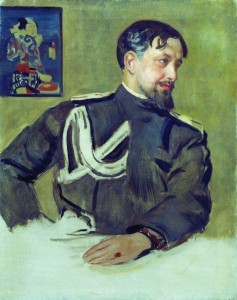
Posted: June 30th, 2014 | 1 Comment »
RAS LECTURE
Tuesday 1 July 2014
7pm for 7:15pm
The Tavern, Radisson Blu Plaza Xingguo Hotel
78 XingGuo Road, Shanghai
KAROLINA PAWLIK
Lost in Translation, Found in Typography:
Shanghai Typography of the Republican Period
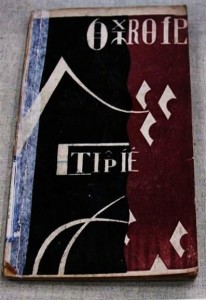
Taking into consideration selected Chinese designs, mostly created by typographers of the Republican Shanghai, Karolina Pawlik will reflect on issues of translation, transculturality and identity. She will also focus attention on the transcription of names, which, in the contemporary world, is not only experienced by famous artists or translated authors but also by many expats in their everyday life.
How can transcultural typography enhance some processes occurring in multinational and multilingual communities? Can it become a sort of catalyst, making people realise cultural change through visually powerful designs? How to handle – both graphically and culturally, socially and personally – several names, written with different scripts? Is it possible to keep the trace of the primary language in cover designs for translations? How to express complex relations between various cultures and languages (scripts) through typography designs?
Karolina Pawlik is a Ph.D. student at the University of Silesia (Poland) and Shanghai University. She is a participant in the elite interdisciplinary Ph.D. program of the “Artes Liberales” Academy in Poland. An anthropologist and art historian, she is a member of the Polish Institute of World Art Studies. Being brought up as a bilingual child in a Polish-Russian family and spending several years of her childhood in Shanghai, she became interested at an early age in issues related to language, scripts and trasculturality. Currently she is completing her Ph.D. thesis on “Transformations of Chinese Writing in Shanghai Typography of the Republican Period“, and has lectured at the Fine Arts College of Shanghai University.
RSVP: to RAS Bookings at: bookings@royalasiaticsociety.org.cn
or “Reply” to this email.
ENTRANCE: Members 70 RMB, non-members 100 RMB. Includes a glass of wine or soft drink
Priority for RAS members. Those unable to make the donation but wishing to attend may contact us for exemption.
MEMBERSHIP applications and membership renewals will be available at this event.
WEBSITE: www.royalasiaticsociety.org.cn
Posted: June 25th, 2014 | No Comments »
I haven’t really mentioned it much on this blog but there’s a new edition of my history of North Korea out, State of Paranoia. It’s been getting a few nice reviews (Guardian, FT, WSJ, Sunday Telegraph etc) and some plugs so I thought I’d offer a few links for anyone interested…it’s here on Amazon UK and here on Amazon US…
